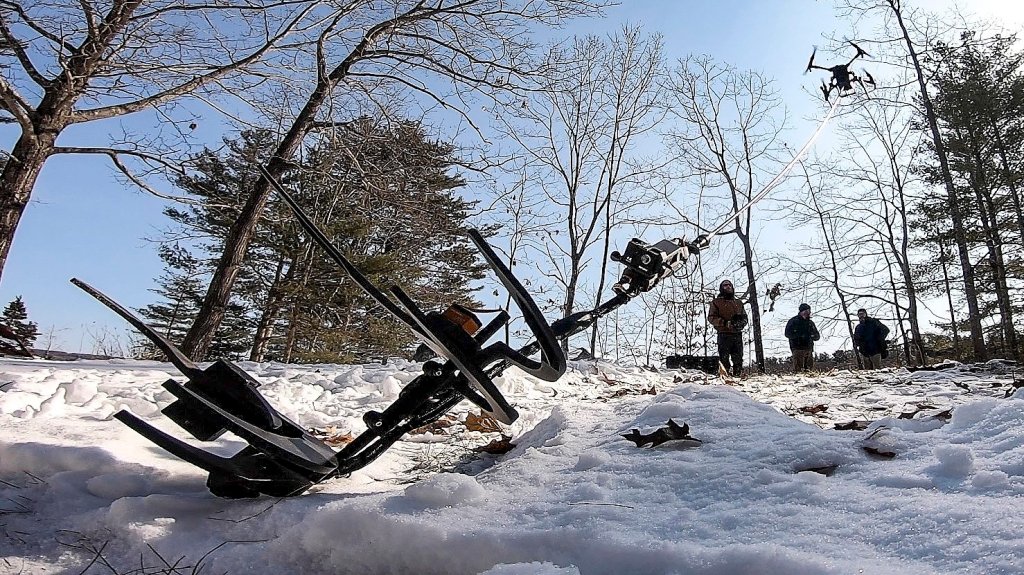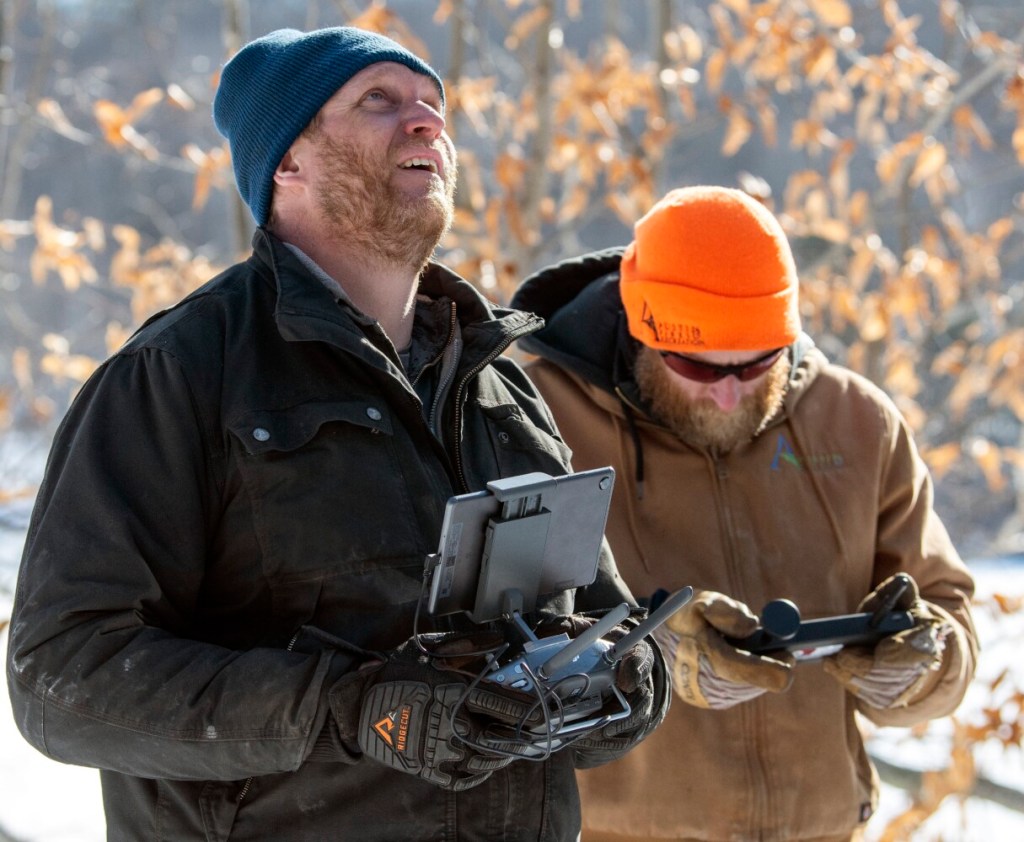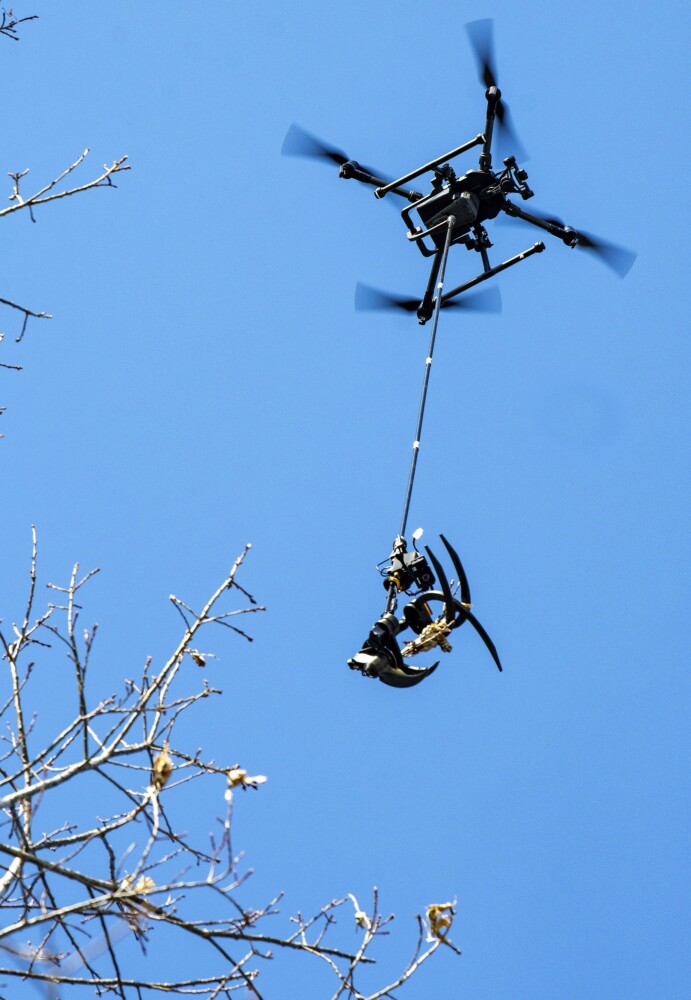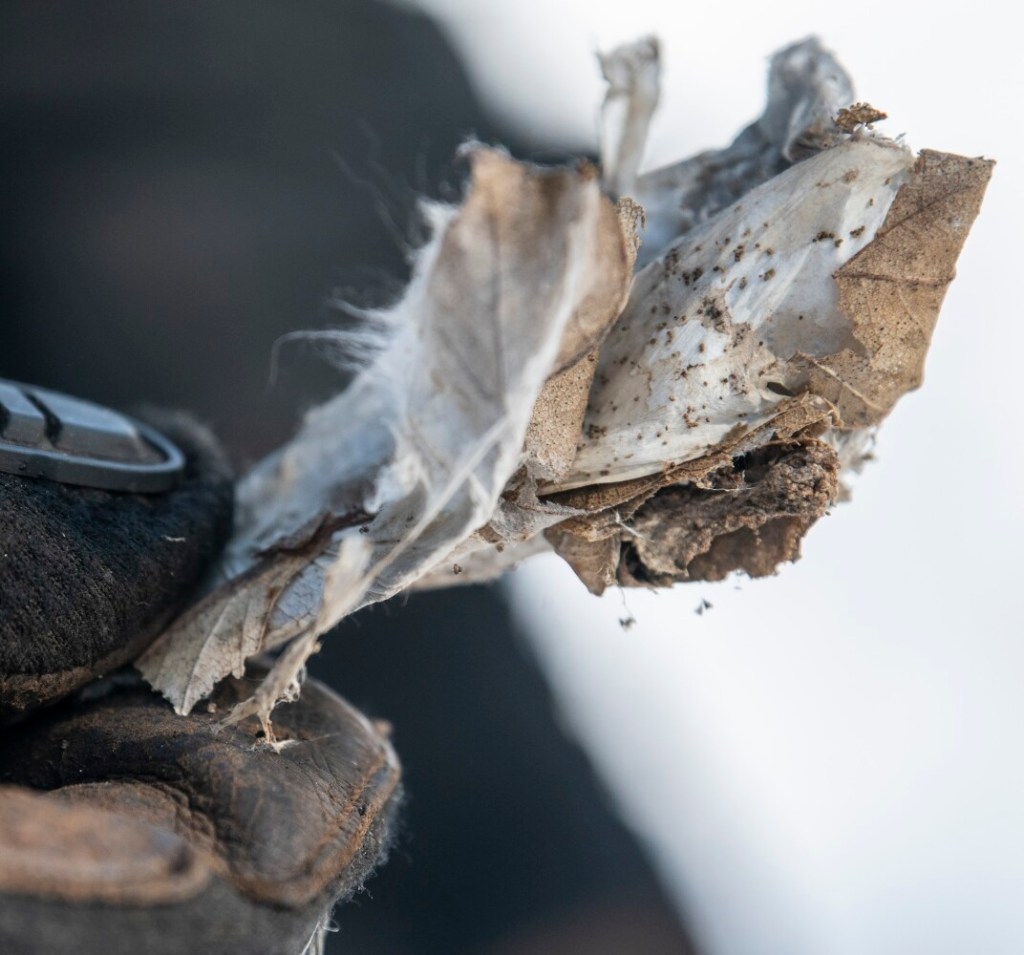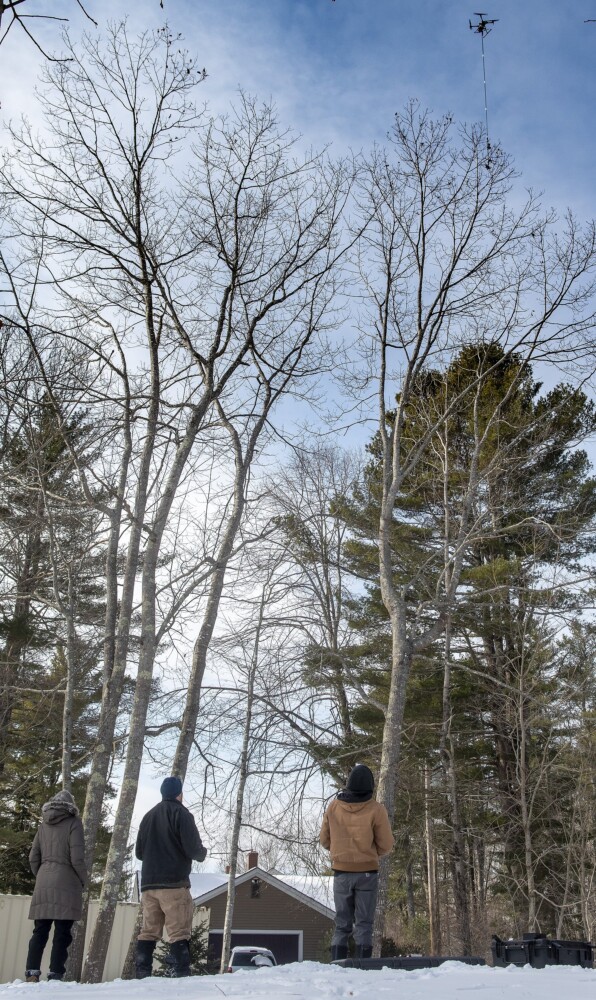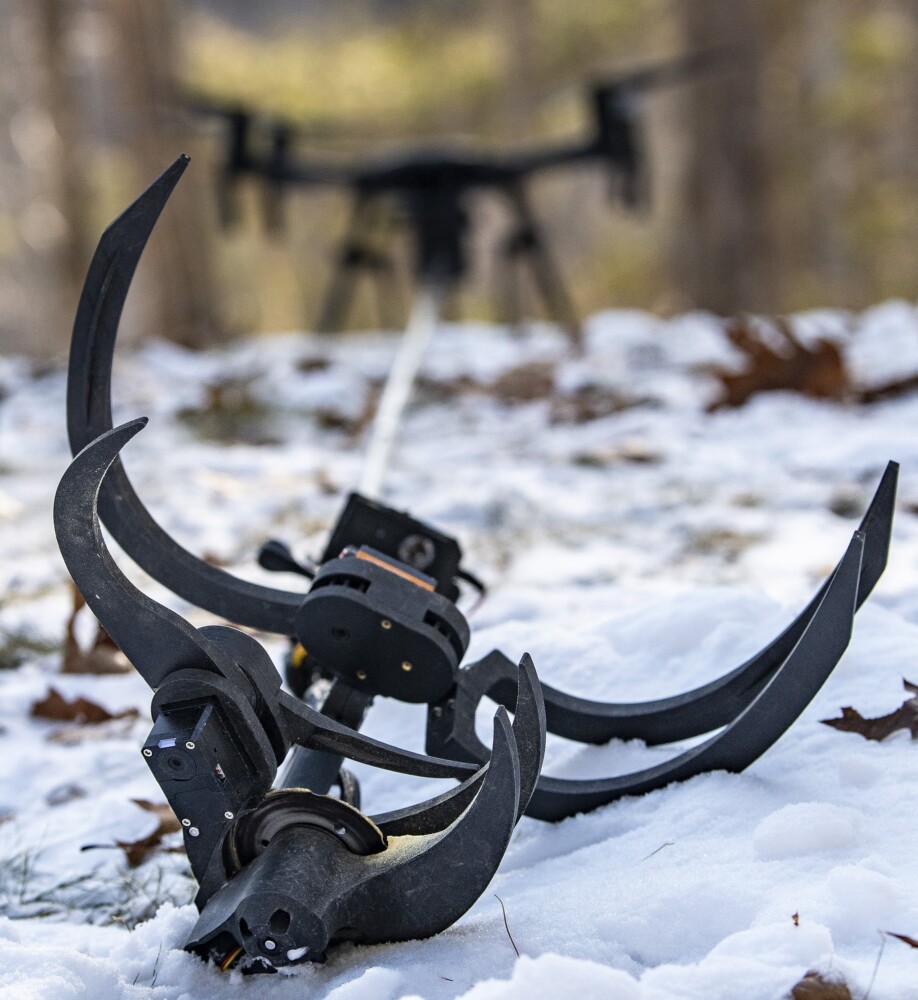LITCHFIELD — Learning that she’s extremely allergic to the toxic hairs shed by browntail moth caterpillars only identified Sally Donelson’s problem, it didn’t solve it.
When she and her husband bought a camp in 2015 on the western shore of Pleasant Pond, Donelson wasn’t really aware of the invasive pest that’s now chewing its way through a large swath of Maine. While the browntail moth has been in the state for decades, 2015 marked the point when the moth population escaped natural controls and started its aggressive spread.
Donelson also had no idea how extremely allergic she was to the toxic hairs of the caterpillars that emerge by the hundreds of thousands every spring from nests woven in oak, maple and fruit trees during the previous year.
With 2022 now being considered the worst year of the insect outbreak, Donelson and property owners across Maine, both public and private, are searching for the best option to protect themselves and their trees from more damage.
The newest option, now being used by one Litchfield arborist, is a tool originally designed to collect samples from tree canopies for scientific analysis that’s mounted on a drone.
On a frigid, still morning last week, Eben Mann, owner of Mann’s Lumber & Tree — so far the only arborist in the state to be using the setup — fired up the drone and tool and started clipping nests from the crowns of mature oak trees ringing the clearing.
“(Donelson) has been (a) customer of mine for a long time,” Mann said during a break. “She’s been begging me for a solution for a few years now.”
Mann said DeLeaves, the Quebec company that manufactures the tool, first contacted him about a year ago to talk about using the tool for browntail moth eradication. When he called DeLeaves back in the fall, he found out that a demonstration was planned for Camden. When he saw it in action, he was hooked and he wanted one.
Donelson, who drove up from her home to watch the process for the first time, said as soon as she learned Mann had the tool, she called him. Her reaction to the toxic hairs shed by the browntail moth caterpillar has been so severe that it’s restricted her activities on the vacation property she and her family love.
“I am fully covered to mow or do anything,” Donelson said, adding that her husband is not allergic and her son is mildly allergic. “I can’t go digging in the yard. I can’t go in areas that have never been cleared.”
Donelson said the other options for controlling the pest aren’t workable or working at her camp property.

Landowner Sally Donelson, left, watches as Eben Mann and Erik Stoesser-Casad use a drone to remove brown tail moth nests Tuesday around her camp in Litchfield. Joe Phelan/Kennebec Journal
Because it’s a lakefront camp, tree cutting is restricted on the property because of shoreland zoning. Injecting the trees with insecticide made no apparent impact, she said, and spraying insecticide can be problematic because it will kill off desirable insects as well as the pests.
“We considered selling several times because it’s just so bad for me,” she said.
For several hours, Mann, along with employee Erik Stoesser-Casad, took turns at the controls. One piloted the drone while the other used a separate hand-held video screen to direct the drone to the nest and operate the cutter.
For Mann, learning to use the tool has been a bit a learning curve, and he needed to get a license to operate the unmanned aerial vehicle.
“It’s like a foreign language, really. We haven’t done anything like this before. We’re just tree cutters,” he said.
Both Mann and Stoesser-Casad have found the more they work with the tool, the better they get with it in both speed and efficiency.
“It’s really difficult, especially in these bigger trees where the canopy has more depth to it,” Stoesser-Casad said. “To try to get to the top and on the inside, sometimes it feels like you’re going in blind.”
The moth, which is native to Europe and western Asia, was introduced in Massachusetts more than a century ago and has spread up and down the northeast coast. Since 2015, it has worked its way inland from the Maine coast and is now found across the state. The most concentrated area of severe populations is in a band that stretches from the Lewiston-Auburn area northeast to the Knox County town of Burnham, which is northeast of Waterville.
By far, the county hardest hit by the invasive pest is Kennebec County.
The Maine Forest Service tracks the spread of the insect annually. In 2021, the agency mapped 198,774 acres of forest damaged by the browntail moth. More than half of that area — 108,138 acres — was in Kennebec County. That’s more than three times the number of the acres damaged in the next county on the list, which is Androscoggin at 30,820 acres.
Allison Kanoti, director if Forest Health and Monitoring and the state entomologist, said in the current and ongoing winter web survey, webs have been identified in new areas of Oxford and Piscataquis County and in northeastern York County, which was the only county in Maine without webs detected in 2021.

Some of the browntail moth nests that the drone cut out of an oak tree Tuesday at a camp in Litchfield. Joe Phelan/Kennebec Journal
Because the moth, a threat to human and tree health, has no natural enemies, it’s able to spread aggressively.
Kanoti said outbreaks can happen when other stressors are present, and the chief one now is lack of adequate moisture during the growing season.
“We haven’t really had very good moisture during the growing season over a number of years now,” she said. “It’s been pretty patchy.”

Eben Mann’s drone carries away some browntail moth nest that it just cut out of an oak tree Tuesday at a camp in Litchfield. Joe Phelan/Kennebec Journal
The dry conditions that stress trees also help browntail moths. The most effective controls are a fungus and a baculovirus that attack the caterpillar. Kanoti said in 2019 there was a widespread collapse in insect populations in areas of high populations because of moisture.
“We hope for wet weather in the spring,” she said. “The best natural control are those diseases.”
Failing that, Kanoti said the best option for residential and business property owners as well as municipal governments is to cut out nests and burn them before caterpillars emerge in about mid-April.
She suggested using professionals to reach nests that aren’t low to ground or are in areas where hazards like power lines and broken tree limbs exist. The state maintains lists of arborists who are willing to prune webs in the winter and licensed pesticide applicators who are willing to treat browntail moth and other pests on its website, maine.gov/dacf/knockoutbtm.
From his office in Sherbrooke, Quebec, Guillaume Charron is monitoring Mann’s progress with the drone-borne tool.
Charron’s four-year-old company, DeLeaves, produces the cutting tool, originally developed to collect samples from tree canopies and other hard-to-reach locations to analyze tree growth and health.
“Normally, we aim for one or two samples per tree to have an overview, but this is more like wanting to remove mechanically a number of nests from a tree, so it’s a little bit different,” Charron said.
But the precision tool is well adapted to cutting the small branches where the nests are woven, but there are some drawbacks. Flight time is limited by battery life, and charging the battery can take longer than the flight time it allows.
Cost is also a factor. Mann said it’s more expensive than other methods of nest eradication, but he didn’t say how much it was.
Charron said he’s been contacted by other U.S. arborists interested in the technology, but one of the barriers to entry is the price. The tool kit itself is $15,000 in U.S. dollars, and it also requires a drone, which can cost as much.
“They need to consider this as an investment, and there’s still a little bit of risk in that investment, so having any funding that would help them acquire the equipment would help,” Charron said. “It’s a big investment.”

Rather than using it broadly, Charron said the DeLeaves tool could be used in sensitive or hard-to-reach areas, along shorelines, around entrances to public buildings and in public parks and in places where chemical solutions are not possible.
Donelson, who has dedicated hours to learning about the pest, from reading the information posted on the Forest Service’s website to attending webinars and talks, said she hopes the DeLeaves tool will be effective.
“If you can get them before they open this way, then they’re not on your land,” she said. “So I could have a much better year this year. That’s my plan. We’ll see.”
Send questions/comments to the editors.

